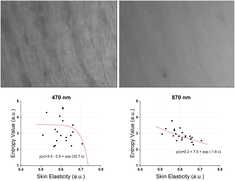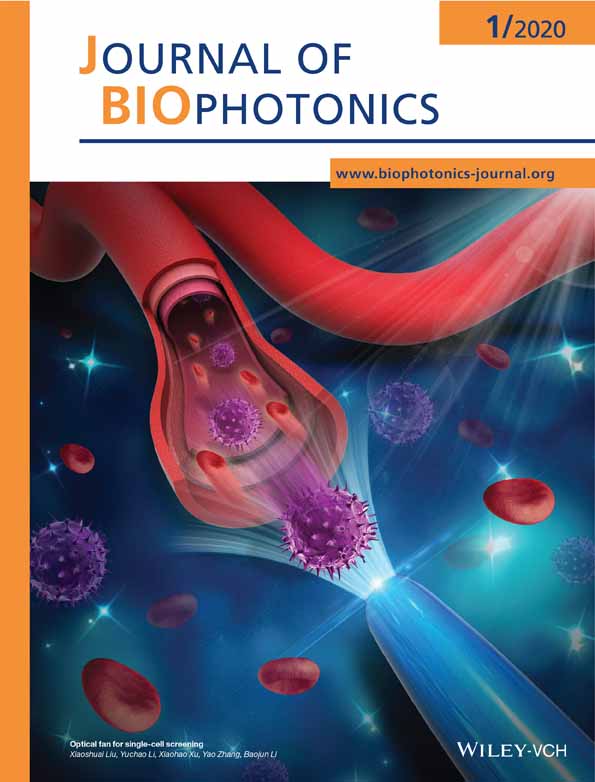Analysis of relation between skin elasticity and the entropy of skin image using near-infrared and visible light sources
Abstract
Skin elasticity has been regarded as one of the main indicators of skin condition. Current measurement devices for skin elasticity are mostly expensive for home-use and should contact the skin surface. As a first step to develop improved methods, we focus on the relation between skin elasticity and the entropy of skin images. Reduced skin elasticity causes wrinkles. It spreads frequency components and increases their randomness in the frequency domain. The randomness is quantified as entropy, which is a measure of the disorder of a system in physics. Therefore, skin elasticity is expected to have a negative relation with entropy. This tendency can be improved by applying penetration depth characteristics according to the wavelength of light. From cheeks and forehead of 12 Korean adults, skin images are acquired with three different light sources (470 nm, 870 nm and broadband light) and skin elasticity is measured. The root mean square error between the measured data and the fitted model is “0.27” (870 nm), “0.49” (broadband light) and “1.42” (470 nm). Furthermore, the results are analyzed by classifying by sex, age and measurement area. This study demonstrates the possibility of developing noncontact home-use devices to measure skin elasticity in the future.
CONFLICT OF INTEREST
The authors declare that there are no conflicts of interest related to this article.




